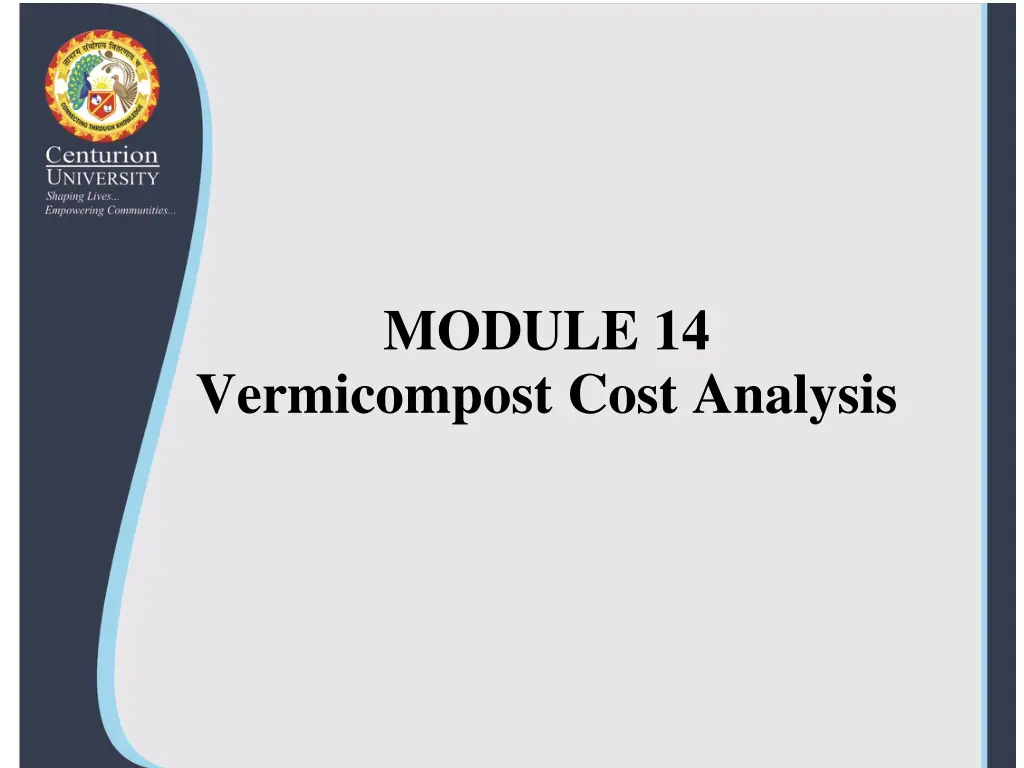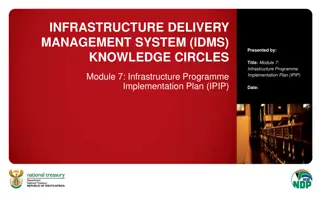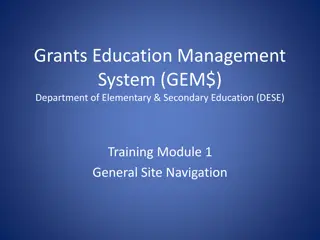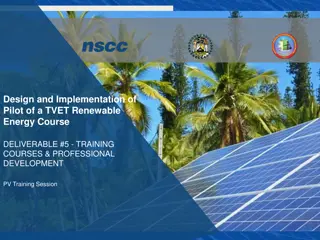
Vermicompost Cost Analysis for Profitable Farming
Explore the detailed cost analysis of vermicompost production, including input costs and expected outputs, to optimize profit margins in agricultural practices. Learn about income generation, net income calculation, and efficient use of resources for sustainable farming.
Download Presentation

Please find below an Image/Link to download the presentation.
The content on the website is provided AS IS for your information and personal use only. It may not be sold, licensed, or shared on other websites without obtaining consent from the author. If you encounter any issues during the download, it is possible that the publisher has removed the file from their server.
You are allowed to download the files provided on this website for personal or commercial use, subject to the condition that they are used lawfully. All files are the property of their respective owners.
The content on the website is provided AS IS for your information and personal use only. It may not be sold, licensed, or shared on other websites without obtaining consent from the author.
E N D
Presentation Transcript
MODULE 14 Vermicompost Cost Analysis
VERMICOMPOST COST ANALYSIS Input cost per tank 1. Cow dung cost(3000kgs) ---------- Rs.1,200 (In one pit we require 1.5 tractor load cow dung.1 tractor load cow dung = 2000kg approx.) 2. Labour charges to load the cow dung---------- Rs.450 3. Labour charges to fill the tank ---------- Rs.750 4. Labour charges for maintenance ---------- Rs.600 5. Earthworms cost (1kg=500/-) 7kgs -------- Rs3,500 (1ft3of volume we require 28.3 gm of earthworms) 6. Other charges per pit(gunny bags, cement bags)-Rs.1,000 7. Actual input cost per tank ---------- Rs.7,500 8. Output expected per tank ----- 2,500 kg Vermicompost 9. Cost of 1kg Vermicompost---- Rs.12 Therefore, 2,500 x 12= Rs.30,000 (30,000/- income generate for one pit) Net income= Gross income- Expenditure = Rs.30, 000 7,500 = Rs. 22,500
5. Collect information related to various subsidies/funds offered by the Government, authorized state units and other financial institutions involved with the promotion of the producer. 6. Comply with relevant regulations in marketing of the produce. 7. Track information related to wholesale and retail price of the produce
8. Record daily sell and purchase of items in designated log books, register. 9. Record quantity, quality, date of manufacture and batch number of every produce accurately. 10. Identify appropriate marketing channels related to the produce considering requirements and constrain






















